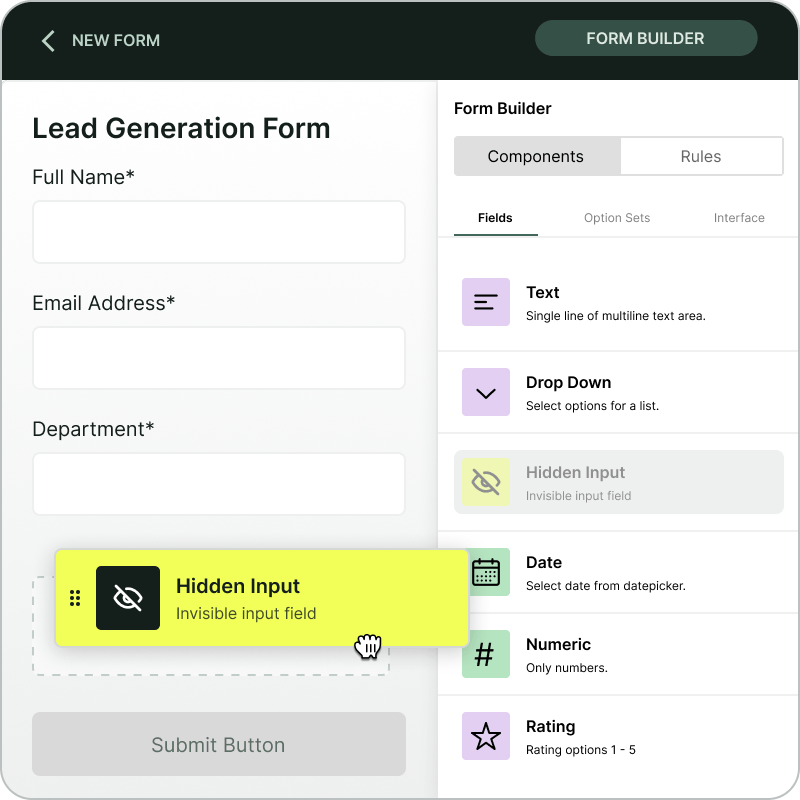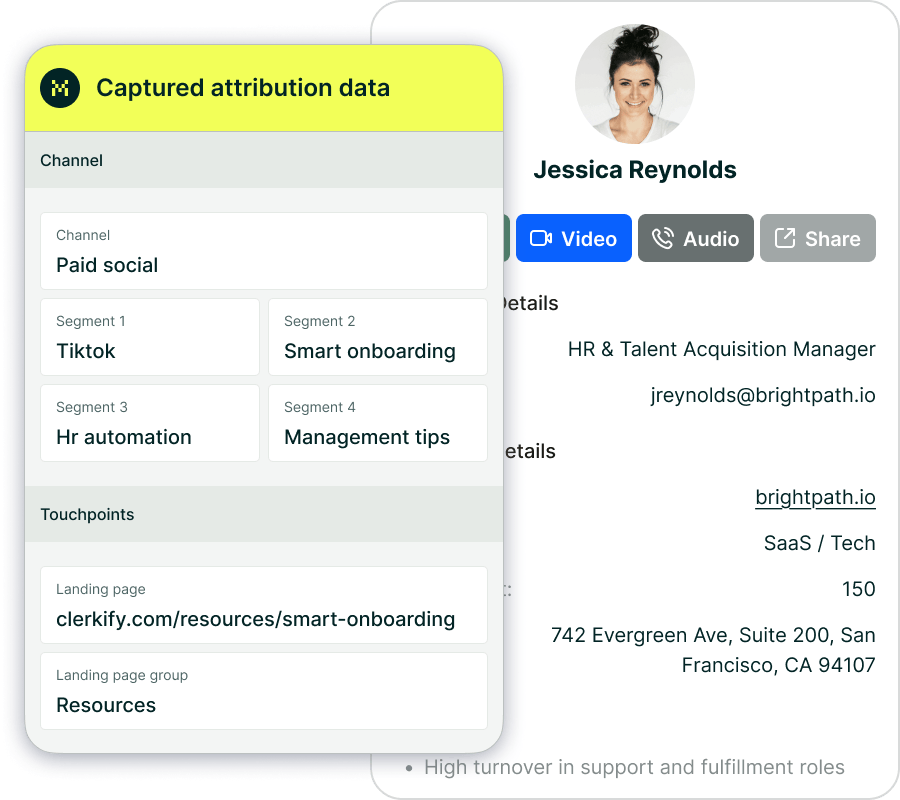Which tool automatically captures UTM parameters and click IDs in Contact Form 7?


gclid and fbclid), and referrer data when someone visits your site. This data flows through Contact Form 7 into your CRM, analytics, and marketing tools — giving you consistent, first-touch attribution data that shows exactly which channels and campaigns drive leads, conversions, and revenue.Contact Form 7 is one of the simplest and most widely used WordPress form plugins. It’s lightweight, flexible, and easy to add to any page. But by default, it doesn’t tell you where your leads are coming from.
Without attribution data, a form submission is just an email address or a message—you can’t see whether it came from paid search, organic social, or an email campaign. That makes it difficult to measure ROI or understand which efforts actually generate results.
Marketers often try to solve this by manually adding hidden fields or using tracking plugins that slow down the site or require complex configuration. Madlitics eliminates all of that by providing a lightweight, no-plugin solution that automatically records how each visitor found you and attaches that data to their Contact Form 7 submission.
Madlitics acts as an invisible layer between your marketing channels and your WordPress site. When someone lands on your page, it records their first-touch data—UTMs, click IDs, referrer, and landing page—and stores it locally in the browser.
When that visitor fills out a Contact Form 7 form, Madlitics populates your designated Madlitics Fields with all that attribution data, ensuring each submission includes the full marketing context. From there, the data flows directly into your connected CRM or analytics platform, giving you a clear picture of which campaigns and sources are driving conversions.
There’s no coding required and no new dashboard to manage—Madlitics simply makes your existing workflow smarter and more consistent.
Setting up Madlitics with Contact Form 7 only takes a few minutes.
Add the lightweight Madlitics script to your WordPress site, either manually or through Google Tag Manager. Then add seven Madlitics Fields to your Contact Form 7 form—these fields automatically capture your visitor’s channel, campaign, and landing-page data whenever they submit the form.
Because Contact Form 7 is so lightweight, Madlitics integrates directly with the form markup—no plugin dependencies or event hooks needed. Once installed, every form submission will automatically include clean, structured attribution data that can be viewed in your CRM, lead management tool, or reporting system.
To test your setup, submit your form and verify that the Channel and Landing Page fields populate automatically.
For detailed steps, visit the Contact Form 7 integration guide.
To learn more about how Madlitics Fields work, see the Madlitics Fields Value Pairs article.
And for validation best practices, review the Madlitics Testing Overview.
Does Madlitics capture Google Ads click IDs in Contact Form 7?
Yes. Madlitics automatically captures gclid, fbclid, and msclkid parameters from your paid campaigns. Those values are saved and passed into your form submissions, making it easy to connect leads to specific ads or campaigns.
Can I add the Madlitics script through Google Tag Manager?
Absolutely. GTM installation works perfectly. Just ensure the tag fires in the <head> of your site so the script loads before your Contact Form 7 form appears.
What happens if a visitor returns to my site through another channel?
Madlitics uses first-touch attribution, meaning it always prioritizes the visitor’s original source. That ensures consistent, reliable attribution data across all submissions.
Other tools try to capture attribution data for Contact Form 7 using extra plugins or custom JavaScript, but those approaches often cause conflicts or produce inconsistent data. Madlitics was built specifically to solve that problem.
Instead of adding another analytics platform or plugin, Madlitics integrates directly into your existing workflow. It’s form-first, meaning attribution data is captured and passed directly into your Contact Form 7 submissions — where it belongs.
Competitors like GA4 can collect similar parameters, but they rely on dashboards and complex integrations. Madlitics focuses on data consistency and visibility — making sure every lead submission contains complete, trustworthy marketing data that your CRM can use to close the attribution loop.

https://yoursite.com/?utm_source=linkedin&utm_medium=paidsocial&utm_campaign=q1_promo

Start capturing attribution data automatically in your Contact Form 7 submissions.
Follow our integration guide and see how Madlitics brings clean, consistent attribution data directly into your CRM.
Madlitics installs in minutes, runs silently, and gives you visibility into which channels, campaigns, and keywords are actually driving results.



